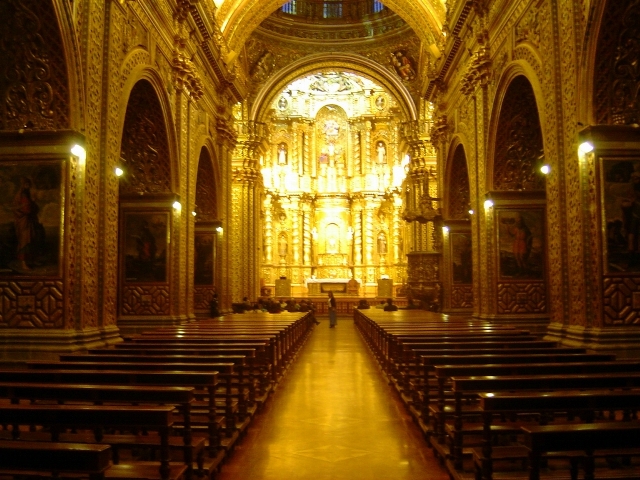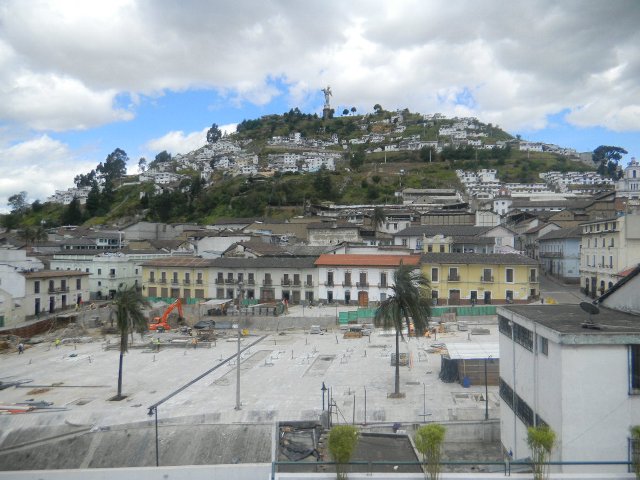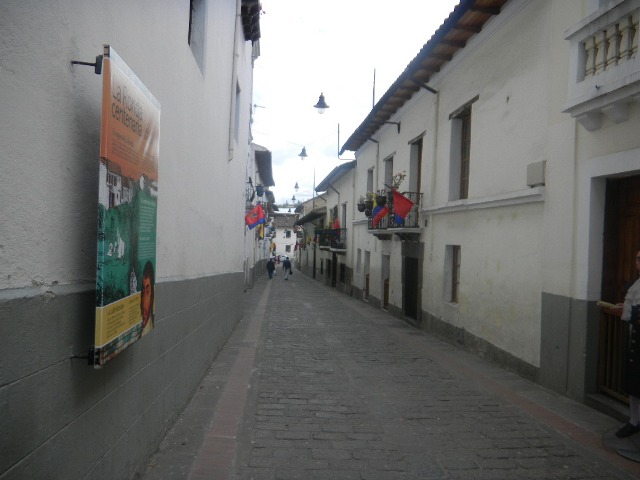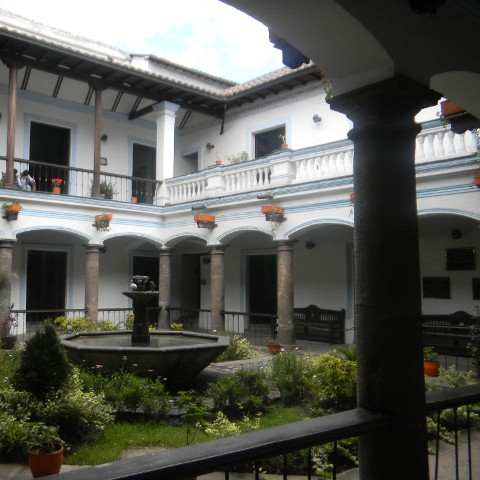One Last Day in the Centro Historico
This blog also seems to have gotten forever lost because of the accented vowel in the original title, so I'm reposting it here:
Last Friday, I took the day off of work and toured the Historic Center of Quito one last time. Though I'd walked around the Centro several times before, I hadn't managed to get in on a tour by the Metropolitan Police like I had been wanting to. I knew that my final days in Ecuador were quickly filling up with plans, and since I would have had to leave work early on Friday for my flight to Cuenca I decided instead to make an appointment for my tour and take the whole day off to see sights and get things done.
I arrived at the Plaza Grande in the morning, where I met with my tour guide from the Metropolitan Police. She explained the four buildings that front the Plaza Grande, and then we walked down García Moreno to Iglesia de la Compañía de Jesús, a beautiful old baroque church. The inside of the church is supremely ornately decorated, and everything is covered in brilliant gold leafing. I couldn't take pictures inside, but the church was such a spectacle that I found this image of it from http://static.panoramio.com/photos/original/89933.jpg to show to you all:

From there we walked to the Plaza San Francisco, and entered the Museo Fray Pedro Gocial that is next to the San Francisco church. From the museum you could see the grounds of the convent and the church from the choir box. There was also a big collection of baroque religious art. Here is a picture of the courtyard of the convent:

After that, we headed to the Museo de la Ciudad (Museum of the City), which was housed in a cool and restored old building and was full of captivating exhibits on Ecuador's pre- and post-colonial history. From the balcony on one side of the house there was a great view of the boulevard they are constructing at the Western limit of Old Town and of the El Panecillo hill (meaning The Bread Roll, nicknamed that for its shape) and the Virgin of Quito statue.

From there we walked down calle La Ronda, which used to be the city's red light district but is now a hip street full of cafés, bars, stores, and other shops that are happening - at night. This is what it looked like at 11am on a Friday:

The Metropolitan Police tour ended there, but I hit up a few more sights before heading back to the north side to have lunch and pack for Cuenca. I visited the Museo Histórico Militar or Casa Sucre, the former home of one of Latin America's great revolutionary leaders, Mariscal Antonio José de Sucre. The museum held numerous military artifacts, relics from Sucre's time living there, and told the history of Ecuador's great battles and Sucre's life story. I also stopped by the Museo Camilo Egas. Camilo Egas was an indigenist painter who became world-famous in the 20th century for his contemporary works. I found his paintings very interesting, but not nearly as powerful or striking as Guayasamín's. I left that musem right at lunchtime and hopped a taxi back to my apartment to get ready for Cuenca. In closing, here is a picture of the courtyard of Sucre's house:

Write to you soon!
Catherine